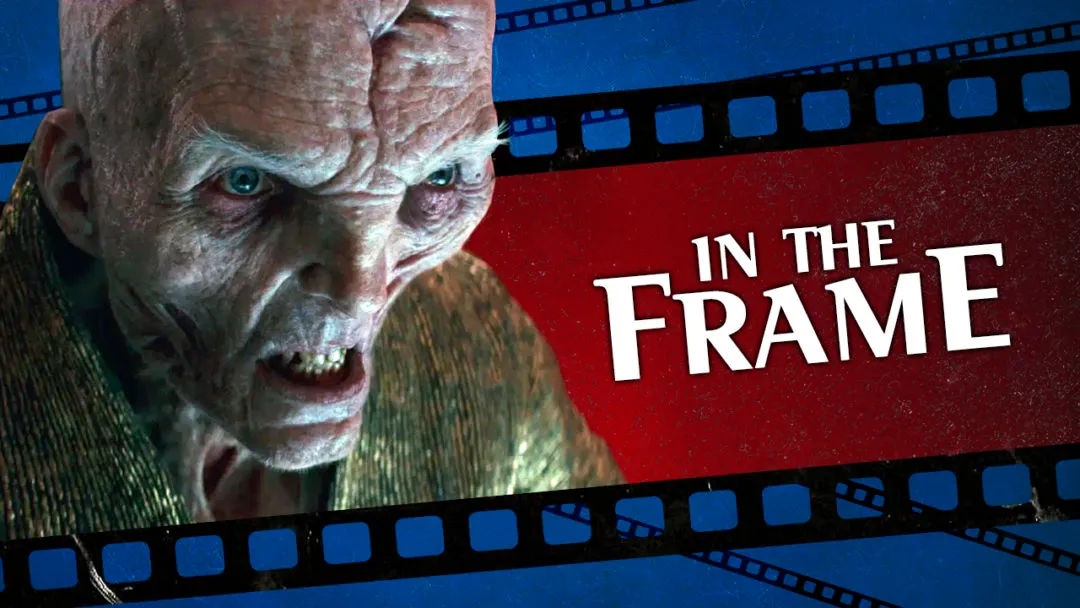One of the great things about Star Wars is the way in which the franchise is as immersive as the audience wants it to be. Star Wars doesn’t just tell a story for the audience — it creates a larger universe that they can inhabit, if they so wish.
This is obvious from the opening film in the franchise. Compared to later blockbusters, and even later Star Wars films, A New Hope is remarkably straightforward and linear. The droids crash on Tatooine and end up at the moisture farm; Luke ends up heading to Mos Eisley, finds his way on to the Millennium Falcon and then to the Death Star, before returning to Yavin and taking part in one final effort to destroy the Death Star.
This simple linear approach is a large part of the appeal of Star Wars. Much has been made of the debt that writer and director George Lucas owes to Joseph Campbell and to the so-called monomyth. Despite the futuristic setting, Luke’s arc is universal. It is the hero’s journey, the story of a boy who becomes a man. The original Star Wars is frequently held up as an elegantly simple storytelling model.
However, Lucas added a lot of detail into the film without making it any less accessible. Critic Roger Ebert talked about the idea of “the law of conservation of dramatic resources” — the manner in which most movies are streamlined in service of their story so that unnecessary details are removed or stripped out to render the narrative particularly efficient. Star Wars eschews that.
Everything in Star Wars is far more detailed than it needs to be. There is a reason that the cantina scene in Star Wars has become such a touchstone; the sequence is populated with a variety of aliens with distinctive designs and aesthetics. It suggests a larger universe than any Luke has ever known and that Star Wars unfolds in a richer and larger context than this single adventure.

The dialogue is peppered with references to characters and events that are not especially relevant to the story. Roguish mercenary Han Solo (Harrison Ford) mentions “Jabba the Hutt” and boasts of how well his ship performed on “the Kessel Run.” Old Obi-Wan Kenobi (Alec Guinness) alludes to “the Clone Wars,” a vaguely defined conflict that took place long before the events of the film.
Of course, all of those references would later be explained to an extent. But to audiences watching Star Wars in 1977, these details offered the opportunity for speculation, which helped to turn Star Wars into an obsession. The film was rich enough that it lingered in the public imagination during the long gaps between films and even trilogies. Fans could imagine elaborate stories and theories about various minor characters and references.
However, it is possible to be cynical about all this. These objects of fascination helped to turn Star Wars into a merchandising empire. Lucas famously retained the merchandising rights on the original film, and the ability to turn interesting-looking background extras into collectible toys or assets surely appealed to him. After all, almost every alien who appears in Star Wars has an action figure.
Producer Gary Kurtz parted ways with Lucas between The Empire Strikes Back and Return of the Jedi lamenting, “The toy business began to drive the [Lucasfilm] empire.” Indeed, it could be argued that one of the problems with the prequels (and the remastered original trilogy) is the extent to which Lucas keeps packing the frame with unnecessary (often computer-generated) clutter.
However, there are also issues with how fans and the multimedia companies responded to the level of detail within the Star Wars universe. Unlike with other immersive and expansive properties, like Star Trek, there has long been an effort to maintain and curate the Star Wars canon, to offer a concrete explanation for all those background characters and stray lines of dialogue.

Before the franchise was bought by Disney, there was even a hierarchy of canon that ranked various media’s legitimacy in sketching out this science fiction universe — including various tie-in novels, video games, comics, and so forth. After the Disney purchase, there was even a committee appointed to determine what was and was not part of the Star Wars canon.
Explicitly fleshing out every aspect of the canon can kill the fun. The bounty hunters on the bridge of the Executor in The Empire Strikes Back are not fascinating because the audience knows that they are Dengar, Bossk, Boba Fett, 4-LOM, and Zuckuss. They are fascinating because they could be anything. What is the deal with that robot with the insect head? The fun is in the speculation, not the answer.
These sorts of extra details are supposed to be optional rather than mandatory. More than one hundred million Americans have seen The Empire Strikes Back. While Boba Fett is immensely (and most likely disproportionately) popular among fans, it’s mostly because a lot of audience members see him as a guy in a cool suit with a jetpack.
This becomes a problem when fans prioritize their versions of these characters ahead of those featured on screen. A lot of fans were excited about Fett when he appeared in the Star Wars Holiday Special and The Empire Strikes Back and disappointed when he was casually killed off by a blind Han Solo in Return of the Jedi. Fans have spent decades trying to rationalize and rewrite his death. (The pre-Disney novels did in fact bring him back.)
However, to casual viewers, this was a perfectly reasonable ending for a figure who was essentially a plot function; he existed to track Han Solo to Bespin in The Empire Strikes Back and to ferry him back to Jabba the Hutt for Return of the Jedi. He looked impressive, but he was not a fully formed character. Fett has four lines in The Empire Strikes Back and none in Return of the Jedi.

Something similar happened with the character of Snoke (Andy Serkis) between The Force Awakens and The Last Jedi. Snoke briefly appeared as a hologram at the end of The Force Awakens, as a superior to both General Hux (Domhnall Gleeson) and Kylo Ren (Adam Driver). He summoned Ren to train with him as Starkiller Base crumbled.
Naturally, fan speculation kicked into overdrive. Some fans wondered whether Snoke was actually Darth Plagueis, implied to be Emperor Palpatine’s mentor in Revenge of the Sith. Other fans wondered what size Snoke was supposed to be, given that he only appeared as a gigantic hologram in one brief scene — was the hologram to scale, or was he the same size as Yoda?
Of course, The Last Jedi ultimately revealed that Snoke was largely a plot function. Like the Emperor in Return of the Jedi, Snoke existed as a power that could check the trilogy’s primary antagonist and against which that antagonist would eventually rise. All other details were inessential to the story being told. Fans could come up with their own Snoke-related back story on their own time.
That is the beauty of Star Wars and always has been. Star Wars has always worked best serving both fans and casual audiences, providing simple and straightforward stories that appeal to the masses while also creating a rich and textured fictional universe that invites speculation and imagination from more devoted adherents.
Offering more definition of characters like Boba Fett and Snoke ironically makes the universe seem smaller. These gaps in the official canon offer space in which anything is possible. The fixation on a set canon is restrictive. Is “the Kessel Run” any more interesting now that fans have actually seen it in Solo?
Star Wars is as simple or as detailed as the audience wants it to be. It is as vast as the viewer’s imagination will allow. This is probably one of the reasons why the franchise has lingered in the public imagination for as long as it has.





